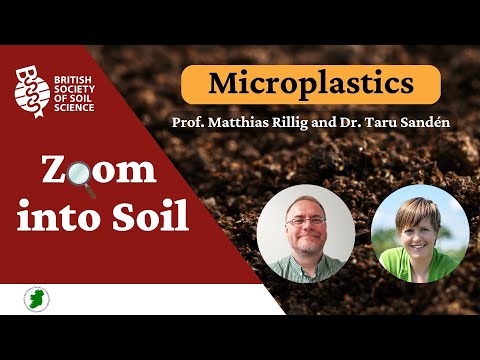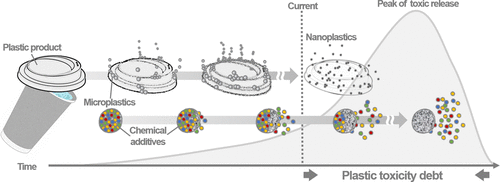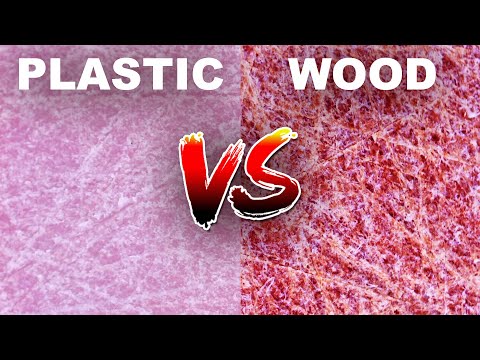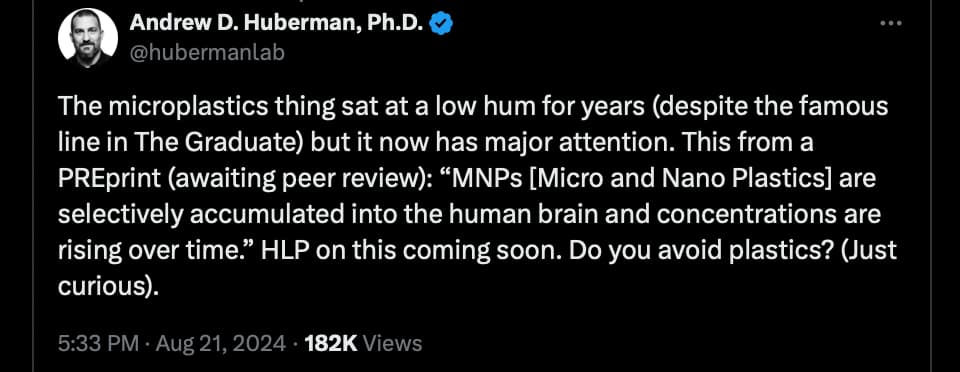According to wikipedia, that is the most common plastic produced so that it was most commonly found is as expected.
Paywalled Paper:
Detection of microplastics in the human penis
The proliferation of microplastics (MPs) represents a burgeoning environmental and health crisis. Measuring less than 5 mm in diameter, MPs have infiltrated atmospheric, freshwater, and terrestrial ecosystems, penetrating commonplace consumables like seafood, sea salt, and bottled beverages. Their size and surface area render them susceptible to chemical interactions with physiological fluids and tissues, raising bioaccumulation and toxicity concerns. Human exposure to MPs occurs through ingestion, inhalation, and dermal contact. To date, there is no direct evidence identifying MPs in penile tissue. The objective of this study was to assess for potential aggregation of MPs in penile tissue. Tissue samples were extracted from six individuals who underwent surgery for a multi-component inflatable penile prosthesis (IPP). Samples were obtained from the corpora using Adson forceps before corporotomy dilation and device implantation and placed into cleaned glassware. A control sample was collected and stored in a McKesson specimen plastic container. The tissue fractions were analyzed using the Agilent 8700 Laser Direct Infrared (LDIR) Chemical Imaging System (Agilent Technologies. Moreover, the morphology of the particles was investigated by a Zeiss Merlin Scanning Electron Microscope (SEM), complementing the detection range of LDIR to below 20 µm. MPs via LDIR were identified in 80% of the samples, ranging in size from 20–500 µm. Smaller particles down to 2 µm were detected via SEM. Seven types of MPs were found in the penile tissue, with polyethylene terephthalate (47.8%) and polypropylene (34.7%) being the most prevalent. The detection of MPs in penile tissue raises inquiries on the ramifications of environmental pollutants on sexual health. Our research adds a key dimension to the discussion on man-made pollutants, focusing on MPs in the male reproductive system.
Morrie Markoff followed a mostly vegetarian diet, didn’t use plastic and didn’t have any neurological disorders like dementia or Alzheimer’s
Has anyone found a good countertop water filter that an independent lab has confirmed can filter out both microplastics and nanoplastics?
I came across a Reddit thread discussing the results of Consumerlab testing:
https://www.reddit.com/r/sustainability/comments/z4fnk6/water_filter_to_lessen_microplastics/
According to this thread, Brita filters seem to address microplastics. However, further research indicates that Brita’s overall filtration quality isn’t impressive:
It would be ideal to find a filter that can effectively remove nanoplastics, fluoride, disinfection byproducts, and heavy metals.
I’ve also considered reverse osmosis filters, but it appears they might not be effective for micro/nanoplastics.
https://www.reddit.com/r/WaterTreatment/comments/1b6sc49/does_ro_give_microplastics/
I’m prefer a countertop option.
Here’s Wirecutter for context (they haven’t tested countertop reverse osmosis options as I understand):
Brita Hub looks promising for plastics:
The best countertop water filters and pitchers for reducing nanoplastics and forever chemicals - CBSSports.com.
“Brita’s top-of-the-line stand-alone countertop water filtration system earns 4.2 stars on Amazon, with good reason. Independent testing confirmed this machine removes 99.9% of microplastics as small as 0.5 microns. That means you’re not just getting rid of the larger pieces, but many of the smaller-sized nanoplastics. Testing also confirmed that it filtered out between 95% and 98% of PFOA and PFOS (PFAS chemicals).”
The filters are often made of plastics… In fact some suspect that the high MP content of bottled water is b/c they are prefiltered…
Yes, ideally it would be a metal-based one. Though I believe some tests account for this fact (net change in plastic content = new amount introduced - amount removed).
I tried using a silicone toothbrush, the bristles are too soft to be effective, as plaque or whatever was left on teeth. Electric toothbrush is effective.
As environmental toxins go, these are certainly some big ones to pay attention to.
And, a little more “color” as @Neo would say…
https://www.nationalgeographic.com/premium/article/pfas-bpa-chemicals-kitchen-risk
https://www.theguardian.com/fashion/2023/jul/02/fashion-chemicals-pfas-bpa-toxic
An examination of the livers, kidneys and brains of autopsied bodies found that all contained microplastics, but the 91 brain samples contained on average about 10 to 20 times more than the other organs. The results came as a shock, according to the study’s lead author Matthew Campen, a toxicologist and professor of pharmaceutical sciences at the University of New Mexico.
The brain samples, all derived from the frontal cortex, revealed substantially higher concentrations than liver or kidney, at 3,057 μg/g in 2016 samples and 4,806 μg/g (0.48%, by weight) in 2024 samples, ranging as high as 8,861 μg/g.
We don’t really know for sure how harmful they are yet so it’s hard to make an assessment how much you should care. It could be not that much, as plastic workers aren’t doing that bad, since we would notice if they were death factories? And if we knew that they were quite harmful, it seems things would start to get banned. How have you tackled this? Is it worth cooking in water, use silicone toothbrush, and so on? Reducing plastics in your environment?
Well if Huberman says it, it must be true. ![]()
The accumulation of plastics in our bodies sounds like a health nightmare.
Unless we’re hoping to become cyborgs. ![]()
New Technique Removes More Than 98% of Nanoplastics From Water
Hopefully in a few years the microplastic issue won’t be one anymore. At least when it comes to new microplastic ingestion. For what has already been accumulated in the body… ![]()
“The paper also found the quantity of microplastics in brain samples from 2024 was about 50% higher from the total in samples that date to 2016, suggesting the concentration of microplastics found in human brains is rising at a similar rate to that found in the environment.”
This issue is sounding more and more like a health 5-alarm fire.



